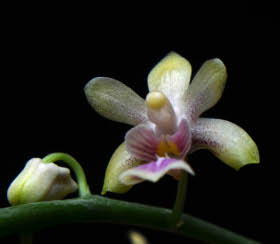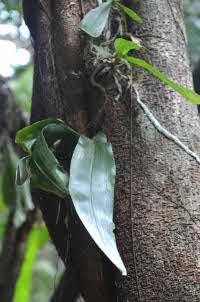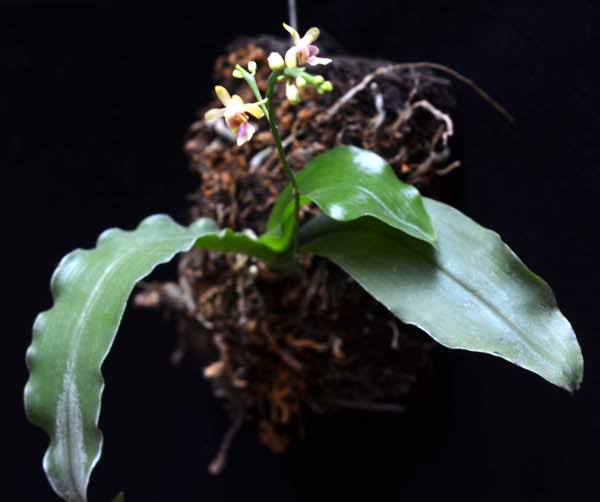Species of the Month – August 2014
Phalaenopsis deliciosa Rchb.f.,
This is a miniature plant with attractive small, but numerous flowering epiphyte. This is also known as Kingidium deliciosum and Doritis deliciosa.
Distribution: The plant is found in Himalayas, NE India, Bangladesh, Nepal, Sri Lanka,Thailand, and Malaysia, Laos, Cambodia  and Philippines. In India it is found in Assam, Sikkim and also reported from Western Ghats as Kingidium deliciosum (Rchb.f.) H. R. Sweet. It is native to riverine forests and grows almost near the rivers and streams at an altitude 600m and below.
and Philippines. In India it is found in Assam, Sikkim and also reported from Western Ghats as Kingidium deliciosum (Rchb.f.) H. R. Sweet. It is native to riverine forests and grows almost near the rivers and streams at an altitude 600m and below.
Plant: Plants is an epiphyte forming clumps at the base. It has a short stem with 3-6 long wavy leaves with undulated margin. Apex of the leaf is slightly unequal. Leaves are up to 6 inches long. Flowers are produced axillary, erect and racemose inflorescence which is about 8 inches long. The inflorescence often branches producing many flowers. The flower size is less than an inch across and is waxy with white or purple markings. Flowers are produced continuously for longer periods. They are fleshy with pink lip and darker lines. Flowers open sequentially facing in all directions. With proper care the plant will bloom for several months.

The spikes after completion of flowering will re flower again. Phalaenopsis deliciosa sub sp. hookeriana produces yellow flowers.
Culture: The plant is a miniature in nature and does well when mounted on a slab of wood or tree fern with a wad of moss. As they are miniatures, if grown in groups producing numerous flowers makes it an interesting plant. They prefer like all Phalaenopsis, filtered light and morning sun. When mounted they need abundant water. These plants prefer intermediate temperature. Application of 19:19:19 at half the recommended dose every week during growth period will benefit the plant. Addition of micro-nutrients and Calcium and Magnesium one in a month will boost the growth.

The species is extensively used as a parent to utilise its size (making miniature hybrids), length of inflorescence and to increase the duration of flowering. It has been crossed with Ascocentrums and Renantheras. Within the genera, lot of primary hybrids are produced.
Article by : Dr. K. S. Shashidhar